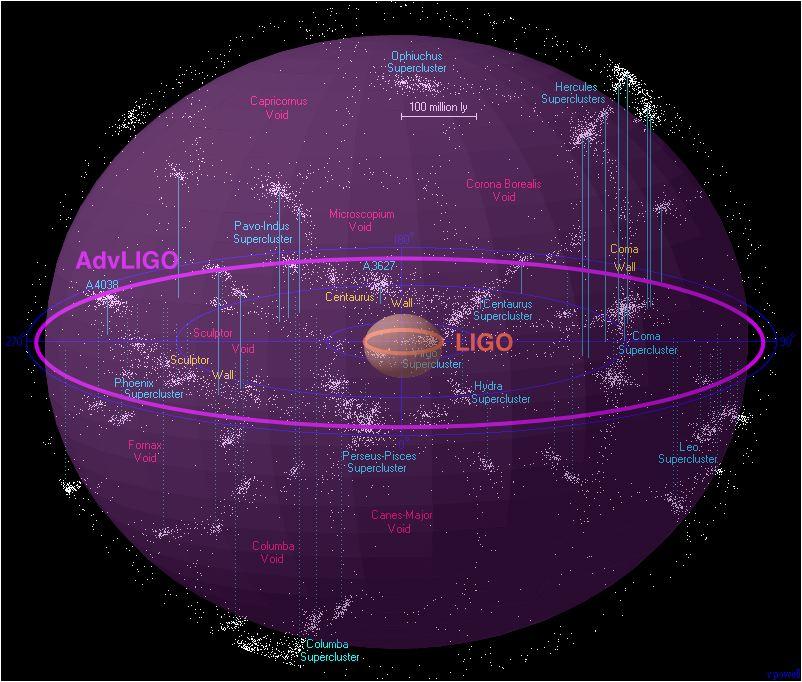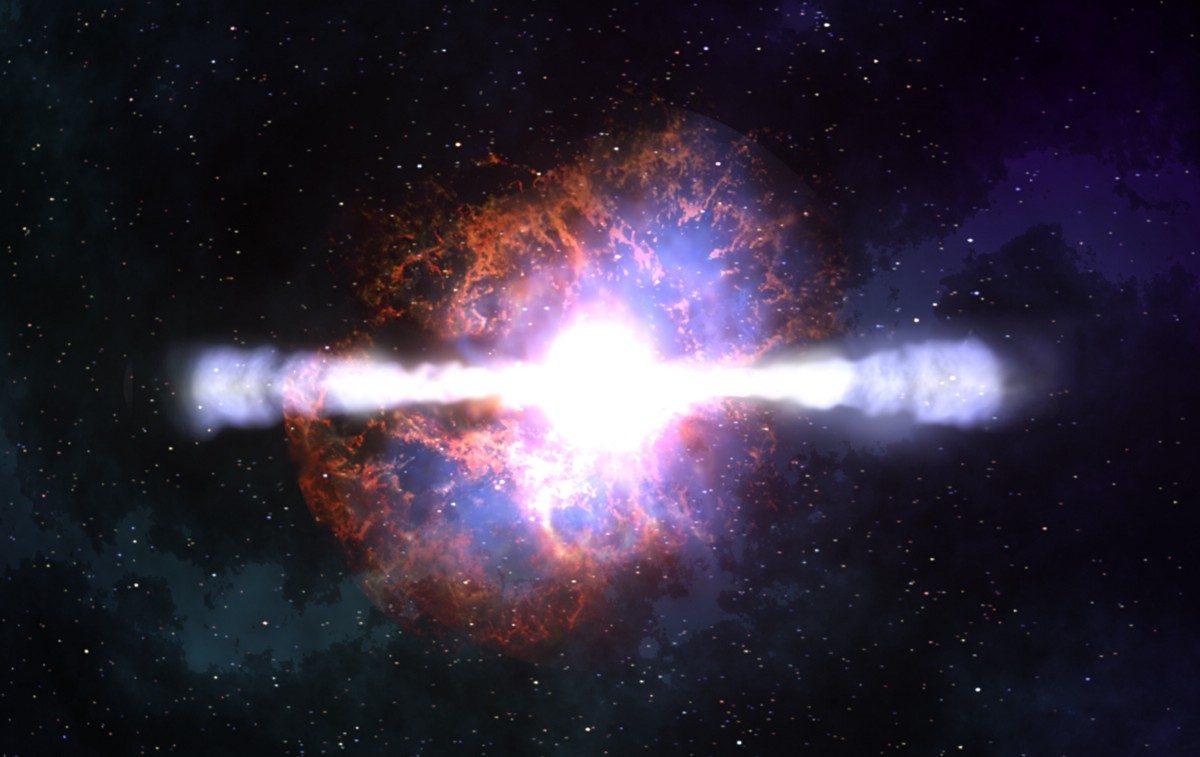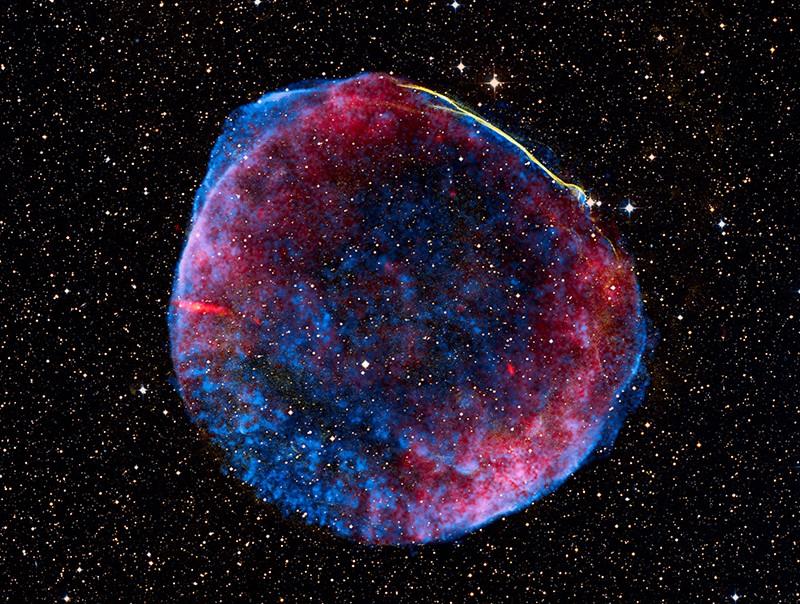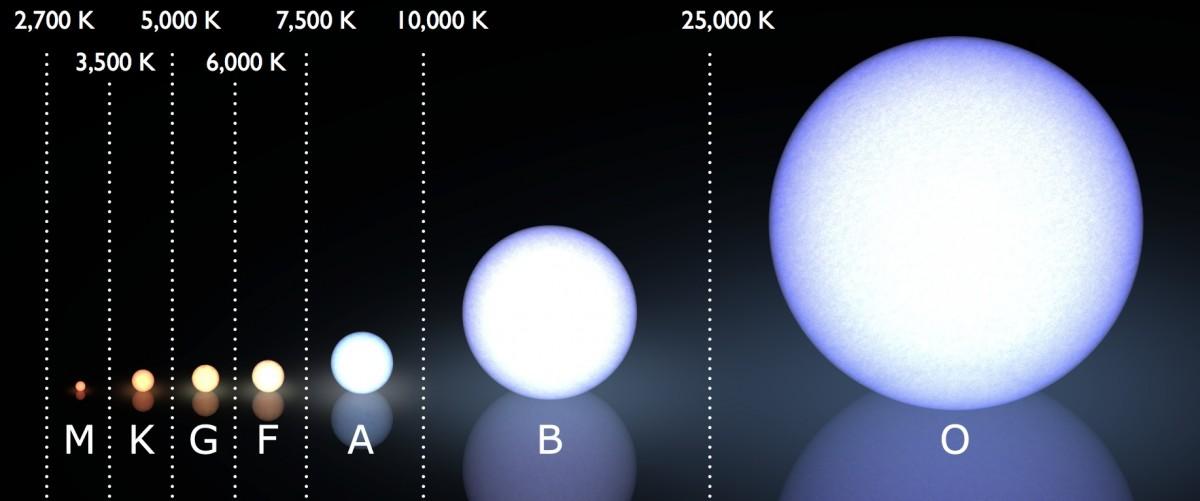Ask Ethan: how many black holes in the universe?

Although we directly recorded three fusions of black holes, we are aware of the existence of a much larger number of them. And that's where they should be
For the third time in the history of observations, we directly recorded the undoubted characteristic feature of black holes: gravitational waves generated by their merging. If we combine this with our knowledge of the orbits of stars moving around the center of the galaxy, observations of other galaxies in the X-ray and radio frequency ranges, and measurements of gas velocities, we get undeniable evidence of the existence of black holes in various situations. But do we have enough information obtained from these and other sources in order to find out the true number and distribution of black holes in the Universe? This topic is devoted to today's reader's question:
The last event recorded at LIGO made me think about how many black holes, what the sky would look like, if they could see them (and for clarity, if only black holes could be seen), what is the spatial and energy distribution of black holes compared to the distribution of visible stars?
Your first impulse would be to move on to direct observations — and this is a great start to an investigation.

A map with an exposure of 7 million seconds, obtained in the Chandra Deep Field South experiment (CDF-S) at the Chandra Space X-ray Observatory
Our best X-ray telescope is still the Chandra X-ray Observatory. From its location in the Earth’s orbit, it can even catch individual photons coming from distant X-ray sources. By capturing images of fairly large sections of the sky, she was able to identify hundreds of point sources of X-ray radiation, each of which corresponds to a distant galaxy located outside of ours. Based on the energy spectrum of the photons obtained, we can observe evidence of the presence of a supermassive black hole at the center of each galaxy.
This in itself is surprising, but there are much more black holes than just one giant black hole for each galaxy. Of course, each of the galaxies has at least one BH in mass that exceeds the Sun by millions or even billions of times, but there are many others besides them.

Masses of well-known binary BH systems, including three confirmed mergers and one merger candidate, received from LIGO
LIGO recently announced its third direct fixation of a clear signal of gravitational waves from merging double BHs, which indicates the prevalence of such systems in the Universe. For a numerical evaluation, we do not have enough statistics, the errors are too large. But if we consider the current range of LIGO, and the fact that it finds an average of one signal every two months, we can confidently say that there are at least dozens of similar systems in each galaxy the size of the Milky Way.

Range of action of Advanced LIGO and its ability to detect BH
Moreover, our X-ray data indicate the existence of a large number of double BHs. It is possible that there are much more of them than those BHs of a huge mass that LIGO recognizes better. And this is not even considering the data indicating the existence of BHs that are not in binary systems with close proximity to each other, which are most likely the majority. If in our galaxy there are dozens of binary BH systems of average mass (10-100 solar), then there are hundreds of low-mass systems (3-15 solar) in it, and at least thousands of isolated BH (not belonging to binary systems) mass comparable to the sun.
I emphasize - "at least."
BH is extremely difficult to detect. We see the most active, most massive and most extreme located. BHs falling on each other in a spiral and merging with each other are fine, but the expected number of such configurations is quite small. Chandra distinguishes only the most massive and active, but most BHs do not have masses greater than the sun in millions or billions of times, and most of these giant BHs are not currently active. Those BHs that we can see should make up a tiny fraction of what is in space in reality, no matter how spectacular the processes we observe.

What we perceive as a burst of gamma radiation could have been born when neutron stars merge, throwing matter into the Universe, creating the heaviest known elements and generating BH at the end
But we have a way to get a good estimate of the number and distribution of BH: we know how they are formed. We know how to make them from young and massive stars that become supernovae, from neutron stars growing due to accretion or merging, and from direct collisions. And although the optical signals of BH creation are ambiguous, we have seen enough stars, star deaths, cataclysms and processes of their formation in the entire history of the Universe to calculate the exact amount that we need.

Supernova remnants arising from a massive star, leave behind a collapsed object: either a BH or a neutron star, and the latter can also become a BH in the future in suitable conditions
All these three methods of obtaining BH relate, if we trace their evolution back to the beginning, to large areas of stellar formation. To obtain:
- supernova, you need a star 8-10 times as massive as the Sun. BHs will be 20-40 times more massive from stars, neutron stars will turn out from smaller stars.
- fusion of neutron stars or accretion increment to BH, you need either two neutron stars approaching in a spiral or randomly colliding, or a neutron star sucking the mass out of the companion star and passing the 2.5-3 solar mass limit necessary to become BH.
- direct collapse in BH, you need to collect enough matter in one place to get a star about 25 times the Sun’s mass, and suitable conditions for BH formation (without supernova).

Photographs in the visible and near-infrared ranges taken by Hubble show a massive star, about 25 times the size of the Sun, that disappeared from the sky without a supernova or other explanations. Direct collapse is the only reasonable explanation.
We can measure the stars located not far from us, and estimate what proportion of the emerging stars is a suitable mass in order to subsequently turn into BH. As a result, we get that only about 0.1 - 0.2% of all the stars close to us have a mass sufficient to at least turn into a supernova, and most of them turn into neutron stars. About half of the emerging systems are double, and in most of these systems we find, the mass of stars is comparable. In other words, most of the 400 billion stars formed in our galaxy will never become BH.

The modern spectral classification of Morgan-Kinan stars and the temperature gap of each of the classes (in kelvins). Most of the (75%) modern stars belong to class M, and only 1 in 800 has enough mass to become a supernova.
But this is not a bad thing, because in general few stars will become black holes. More importantly, a sufficiently large number of stars, most likely, have already turned into BH, in the distant past. Wherever the formation of stars occurs, there is a distribution of masses: there appear several stars of large mass, much more stars of average mass, and a very large number of stars of small mass. There are so many of them that the class M (red dwarf), the mass of which ranges from 8 to 40% of the mass of the Sun, belongs to 3 out of every 4 stars located not far from us. In many new star clusters, there are very few stars of large mass: those that turn into supernovae. But in the past, there were star formation regions in the Galaxy, which were much larger and had a much larger mass than we see in the Milky Way today.

The largest star nurseries in the local group, the Tarantula Nebula , boast the largest stars known to mankind. Hundreds of them sometime (in the next few million years) will become black holes.
The photo above shows the largest region of star formation in a local group of about 400,000 solar masses. In this region, there are thousands of hot and very blue stars, of which hundreds are likely to turn into supernovae. Somewhere 10-30% of them will become BH, and the rest - neutron stars. If we consider that:
- In our galaxy in the past there were many such sites
- the largest star formation sites were concentrated around the spiral arms and towards the center of the galaxy,
- and that today we are observing pulsars (remnants of neutron stars) and gamma radiation sources, most likely being black holes,
then we can build a map of the location of the BH.

NASA's Fermi satellite built the highest-energy map of the universe with the highest resolution ever created. The BH map of the galaxy is likely to show a slightly larger scatter of objects and turn into millions of individual point sources.
This is the full-sky Fermi map that has gathered all the sources of gamma radiation. It is similar to the star map of our galaxy, except for the fact that the galactic disk is highlighted on it. In addition, older sources no longer emit gamma rays, so these sources of radiation appeared relatively recently.
Compared to this card, the BH card will be:
- More concentrated towards the center of the galaxy;
- Slightly more diffuse in width;
- Contain galactic bulge ;
- Consisting of about 100 million objects, plus or minus one order.
If you combine the Fermi map (above) and the infrared map of the Galaxy from COBE (below), you will receive a quantitative distribution of BH in our Galaxy.

Galaxy in infrared light, satellite photo COBE. Although only stars are visible on it, the BH will have a similar distribution, although it is more compressed to the plane of the Galaxy and more prone to the bulge
Black holes are real objects, widespread, and most of them behave quietly, so today they are difficult to detect. The universe has existed for a very long time, and although today we see a huge number of stars, most of all the existing stars of large mass - more than 95% of them - have long been dead. Where did they go? About a quarter of them became BH, and many millions of them still exist, hiding, in our Galaxy, and in the other galaxies their percentage roughly corresponds to ours.

A black hole in a billion solar masses feeds an X-ray jet in the center of the galaxy M87, but perhaps there are still a billion other BHs in that galaxy. They will accumulate mainly to the center.
For elliptical galaxies, BHs will be assembled into an elliptical swarm and accumulate closer to the center, much like stars do. Many BHs will eventually migrate towards the gravitational well in the center of the galaxy due to " mass segregation " - so, apparently, supermassive BHs have become supermassive. But so far we have no direct evidence of this scenario; if we don’t have a way to directly observe quiet BHs, we can never know for sure. But from what we know, this is the best picture of all that we can draw. It is consistent, convincing, and all circumstantial evidence points to it.

Absorption of millimeter-wave light emitted by electrons snooping in powerful magnetic fields created by supermassive BHs in galaxies leads to the appearance of a dark spot at the center of this galaxy. Shadow indicates that cold clouds of molecular gas fall on BH
In the absence of direct observation, this is all that science can count on, and this leads us to an interesting conclusion: for every thousand stars we see today, there is approximately one BH on average, located, most likely, in a denser area of space. Not bad accuracy to answer the question of what is almost completely invisible!
Ethan Siegel - astrophysicist, popularizer of science, blog Starts With A Bang! He wrote the books Beyond The Galaxy , and Treknologiya: Star Trek Science [ Treknology ].
FAQ: if the universe is expanding, why aren't we expanding ; why the age of the universe does not coincide with the radius of the observed part of it .
All Articles